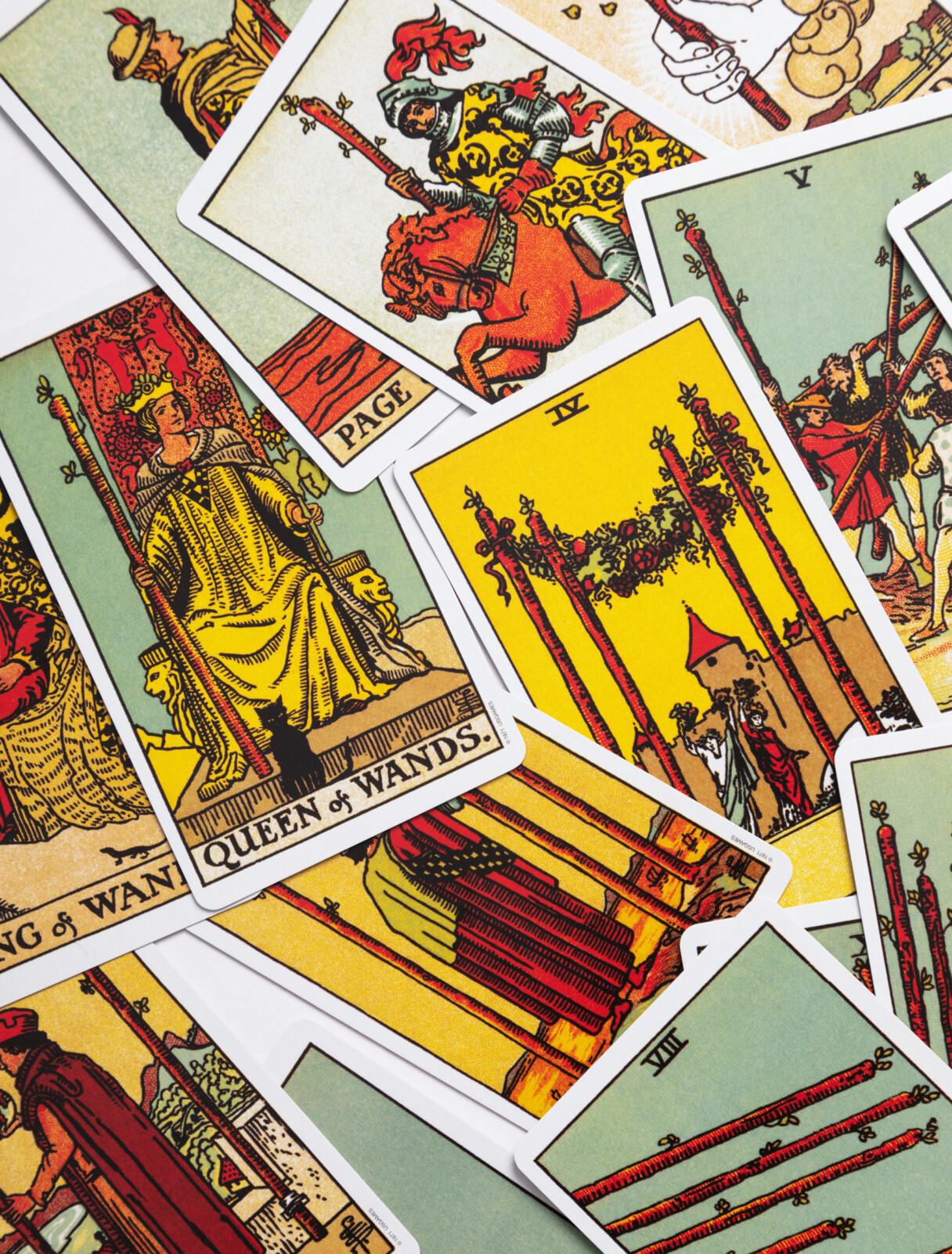
Once upon a time … and they lived happily ever after.
A classic beginning and ending to a traditional fairy tale. An exciting start and a satisfying end to a suspenseful story. The prince got the princess – and the other way around. The dragon has been defeated and the kingdom is safe once again.
What a story. But what does the traditional fairytale have to do with social media and marketing? Quite a lot actually.
Merge of social media, marketing, and storytelling

The traditional fairy tale has a beginning, middle and ending. A conflict and a climax. And not least a meaningful moral, the reader can transfer to their own life. In short, it’s about storytelling. This you can transfer to all perspectives of your communication and marketing – and especially your social media.
If storytelling on social media is done right, it can have the same effect as a classic fairy tale. It can influence, encourage, and teach a lesson.
Storytelling is a special – and easily digestible – way to sell your products or message, without being too intrusive or insistent towards your current as well as potential customers. Instead, you present it as a story, something entertaining and meaningful.
Today, users search for a meaning more than ever before. They don’t want products because it’s cool. They want products because it gives them meaning. With the right kind of storytelling, you can give them this.
But why is storytelling through social media something special? In short: because it allows you to play with format and storytelling in a way that users can engage and – sometimes – become co-narrator.
Let us give you a couple of tips on how you create your own story on social media, and hopefully gives it a happy ever after.

In short
To those who prefer things short and to the point, we give you the most important takeaways. If you want to dig deeper, you can read the full explanation of all the point further down in this article.
- Choose a direction for your story – what do you want with your company/product?
- Show your story, instead of telling it.
- Don’t be afraid to think outside the box with your texts.
- Take advantage of the proximity of social media – consider whether influencers can contribute to the narrative.
- Social media quickly reveal which content that works – but don’t be afraid to try something new.
- Know your customers, so that you can create meaningful content.
- The users demand authenticity – give it to them.
01 Remeber the overall story

Social media is something special. As every other media it has guidelines and restrictions, but it also offers the possibility to play and experiment with your story in a way that crosses the line between the traditional storytelling and common advertising.
Before you begin creating your story there is a couple of things you should consider:
/ What does your business goal look like now and what do you expect it to look like in a year or five years?
/ Who is your target audience?
/ What does your growth plan look like in terms of demographics?
/ How do you position yourself in relation to your customers?
Why? Because you need to know where your story is heading. All content you create must be its own little story, but these stories must support the overall story as well.
Your story can be divided in to three levels:
01
The short – every piece of content is its own story.
02
The medium length – a campaign that spans over several pieces of content.
03
The long – the overall goal. The story all content must support.
If you remember to think of all the small stories as part of the overall story, you have a better chance of getting people to stick around and stay part of your narrative. If, on the contrary, you end up making small stories in East and West, you may find it difficult to maintain credibility, and people may end up choosing other brands over yours.

02 Pictures say more than 1000 words
“A picture says more than 1000 words” – you have heard it before. That doesn’t make it less true. In fact, it’s more relevant than ever before, as images and especially video have gradually become the ultimate format on social media.
Therefore: show your story, don’t tell it.
It doesn’t have to be complicated. Most social media offer the option of attaching an image or video to your post – many of them are built around image and video sharing – and there is therefore plenty of opportunity to make use of visual elements. It can be as simple as creating a graphic or small video. The most important part is for you to keep your story in mind and try to get to the point of your story as quickly as possible – or at least part of it.
Most companies knows that videos and pictures are great eye-catch. Therefore, most users experience their feed to overflow with this kind of content. This, combined with users’ attention being more difficult to catch and maintain, means that the first seconds need to catch attention. It’s about getting noticed.
03 Be brave in your texts

Although images and video are indispensable in storytelling, the written content must not be completely forgotten – it still has a lot of strengths, and it has a great impact on how your messages are understood and received.
Are you an earlier copywriter? Or maybe a novelist? Then you may have a small advantage, but experience is not a must to create good storytelling on social media. So, don’t get nervous if you’re not a text expert.
On social media, it’s not about writing long, comprehensive texts – in fact, the media only allow a limited number of words. Social media is also not where users tend to go when they want to go in depth with a topic. Users turn to social media for inspiration and entertainment. The trick is therefore to use the available space to serve the message briefly and catchily.
Most of all, it’s about being brave – daring to venture out into unknown territory. Don’t be afraid to let your creativity flow, to try your hand, to serve the message clearly, or to try teasing just enough to make the reader want more.
Humor can be a good element – if it’s funny. Unfortunately, intended humor isn’t always as funny when practiced, which is why it can take time to learn how to write humorously. When it works, though, it’s an incredibly effective way to engage users. They are significantly more likely to share things that they find funny – or meaningful.

04 Influencers with influence
Influencers. These and social media are inextricably linked. So why don’t you use this connection? Influencers and famous people can be powerful tools when you need to promote your product or service. It’s just important that you choose to collaborate with people who match your brand, purpose, and product. If you don’t do that, the users will usually be able to sense a mismatch, to which the whole thing can end up falling to the ground.
By choosing an influencer or celebrity who matches your brand, there is a high chance that their followers will match your target audience as well. In individual cases there may be exceptions. Therefore, you should be thorough before you try to start a collaboration, and make sure to check whether their followers fit into your customer persona. The greater the match, the greater the chance that the storytelling will work – even effectively.
05 What does your audience prefer?

By looking into data on your social media, you can quickly find out what works and performs best among your followers. On any social media you will find built-in tools that can help you see through these things. When you learn more about what works, you can more easily create new content for your storytelling that resonates with your followers.
However, you must not be afraid to try new things. You’ll never know what a certain way of creating storytelling or content can do for you if you don’t give it a shot. Get started with a live on Facebook or jump on the wave of a video trend. The Internet is constantly changing, and there are always new things for you to try. Perhaps it is the next trend that hits among your target group?
Remember that it’s all about balance. The thing that works now won’t keep working if you repeat it over and over. The users who have followed for a long time expect something new to happen on your profiles from time to time. If you don’t meet this expectation, you can be sure that your followers will get bored. Few people enjoy seeing the same content in their feed over a long period of time. In addition, it can also slow down your storytelling and perhaps bring it to a standstill – every story requires momentum and something that surprises.

06 It must be meaningful
Know your customer. No matter what, where or how you market, it is one of the most important things. If you don’t know them, you can look at one of our previous blog posts, where we provide inspiration on how you can get closer to them.
But why? Because it makes it so much easier for you to make content that your target audience considers meaningful – not only in the short term, but also in the long run.
When you know what matters to your target group, you can develop a storyline that touches something in the underlying, emotional part of their brain – you can give them meaning.
If, for example, you own an airline and run a discount on one-way tickets, you can of course market it as cheap. But you can also choose to market it so that it becomes meaningful for the part of your customers who often use the one-way tickets as part of their lifestyle: the digital nomads – those who travel a lot without a thought of when they will return or if they do at all.
Social media is a good place to create meaning because you are already very close to the users. In addition, you can find any age group on at least one of these media.
07 A window to another world

Authenticity is on the agenda – and users only demand more and more of it. For this, social media is a brilliant tool. They can act as a window into another world – your world – which is completely unknown to most people.
Many social media offer the possibility of sharing content live or for a limited period. It gives a here-and-now perception, which makes users feel that they have been invited in – that they have been given a piece of your world and can humanize the company. Both Instagram and Facebook are perfect examples. In both media, you can take advantage of live broadcasts and share video and images in your stories.
Users are usually happy to get this kind of insight, and the best part about it is that it doesn’t have to require much from you or your team. Just the fact that users can get an idea that there are people sitting behind the screen and sharing right here and now can be enough.

Let’s summarize
To summarize: you can use storytelling on social media in a multitude of ways. Each media offers its own unique possibilities that are just waiting to be used. Showcase your story with images, graphics, and video. Experiment with the language and use the little space available for words sensibly. Get closer to your target audience with the help of influencers. Keep an eye on who your target audience is, what they like and where they engage – but don’t be afraid to try something new. Embrace trends that make sense for your brand. And use social media as a snapshot and window into your world. Each piece of content should be a little story, but they should all support your overall narrative so that credibility is maintained.
Users seek meaning and authenticity – something that storytelling through social media can give them.

Neither a new nor an easy discipline
Storytelling is not a new and revolutionary discovery. It has been used for a long time – and by many – in all aspects of marketing and communication. Yet only a few brands know how to master the art of using social media in such a way that they tell a story that truly leaves people spellbound. It is no easy discipline, but with practice, dedication, patience, and awareness of your storytelling, it can be done.